The Small-Bore Revolution – Because Bigger isn’t Always Better
A wave of new shotgunners entered the market in the 1990s. Some were lapsed skeet and trap shooters intrigued by a number of emerging clay target games. Remember when Sporting Clays, Hunter’s Clays, Wobble Trap, 5-Stand, Crazy Quail, and others were new to shooters? They all needed shotguns and the standard 12 bore was in such high demand that they were difficult to find on both the new and, especially the used, markets.
The natural progression for any enthusiast is to expand their collection. Finding a small bore in the 2000s was as challenging as finding a 12 bore in the ‘90s. Many shooters jumped from 12 bore to 20 bore, then to a 28 bore and often back up to a Sweet 16. The .410s were somewhat stigmatized, oftentimes the result of a horrible childhood. Back in the day, a “boy’s gun” was the.410, mostly because it didn’t kick like a mule. The 12 bore was a “man’s gun.” The terrible childhood comes from the fact that when it comes to hitting those roles are reversed, and to hit with the .410 you had to have some experience which really made it the “man’s gun.”
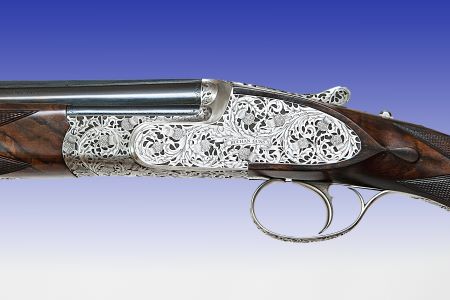
Small bores are popular today, with many hunters favoring sub-gauges for waterfowl and wild turkey. What’s driving this heightened interest?
The More Things Change the More They Stay the Same
New shotgun technologies aren’t responsible for driving the small bore craze. Simply put, there haven’t been any in a long time. One recent example was when fluid steel barrels replaced Damascus steel, but by now that’s a century ago. We haven’t seen new ways to join barrels. Purdey and Holland still favor chopper lumps, Grulla likes demi-blocks, Berretta fancies shoe lumps being while Zoli likes mono blocks. Keep a winning game plan, change a losing game plan, and that’s why those marquee companies stick with what works. Good for them.
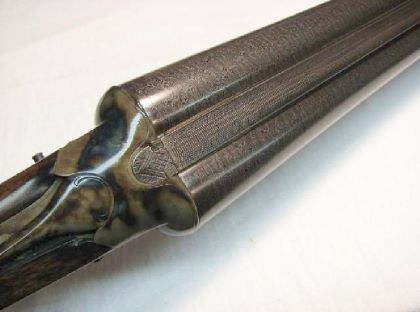
Have you seen any new actions recently? The first over/under was a Beretta wheellock musket produced around the late 1600s. In 1909, England’s Boss and Company followed up that design with the first modern over/under. But the over/unders universal acceptance probably came when John Browning launched his Superposed in 1931. To this day, double gun shooters favor over/unders.
Side-by-sides debuted a century and a half after the over/under. The design was launched in 1750 by Griffin, a UK gun company. Lefever Arms produced the first American version over a century later in 1883. Christopher Miner Spencer’s first pump was patented in 1882, and John Browning’s Winchester 1893 followed a decade later in that year. While Browning wasn’t the first to launch the cornshucker, he did patent the first semi-automatic. His legendary Auto-5 debuted in 1902, just over a century ago.
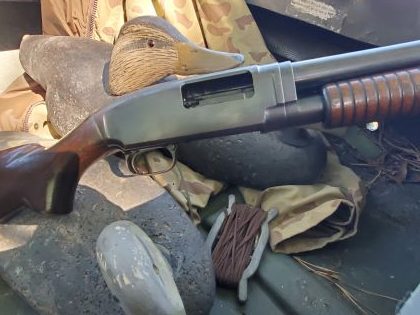
Product developers call this style an RM, or a Repeat/Modify. The design is excellent, and it stays the same. To add variety or to take advantage of new technologies, tweaks occur in materials, fabrics, colors or sizes. Shotgun RMs appear in the form of a new gauge, a wider variety of barrel lengths, new accessories, or stocks made from different materials (think wood to synthetic). So if entirely new shotgun designs aren’t driving the small bore craze, what is it? The improvement in shotshell performance, that’s what.
The Hull Truth
In the early 1800s, shotguns were muzzleloaders and the sequence was simple: pour a measure of powder down the barrel, add a piece of wool, cotton, or a piece of a wasp’s nest as a wad, and then add some shot. Powder placed in the pan of a flintlock lit the spark, and later on a percussion cap added to a nipple did the same thing.
One major improvement in shotshells came after the Civil War when E. Remington & Sons and Dan Lefever created their first breechloading shotguns. That was in 1877 and 1878, respectively. To accompany those new shotgun designs, Winchester created and sold the first brass shotshells. Launched in 1877, these brass hulls could be reloaded multiple times or, better yet, preloaded for immediate use.
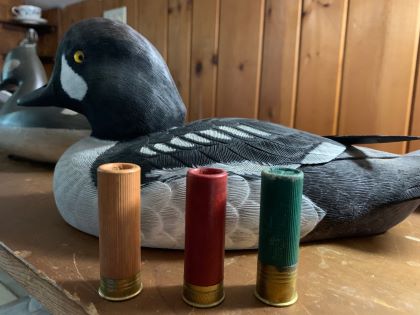
To reduce overall weight and improve performance, a Springfield, Massachusetts company, the C.D. Leet Company, made the first paper hull. Heavyweight paper was rolled to form a tube and then glued into a brass head. Tubes were coated with wax or were shellacked to make them repel water. Paper became the go-to hull of choice until the 1960’s with one exception being during the First and Second World Wars. Reliability was of critical importance, and brass hulls were used by the military.
The Introduction of Plastic
While plastic was invented in 1907 it wasn’t until the Winchester Super X Mark 5 shotshell debuted in 1964. Hunters and shooters loved these compression-formed hulls because they were reliable. Plastic didn’t swell in humid or wet weather, and their strength allowed for increased compression coming from smokeless powders. Star crimps replaced rolled crimps which further contributed to raising pressures and increasing velocities. Double AA’s came out in 1965, and their durability made them a favorite among trap and skeet shooters who could reload them multiple times. To keep shooters from mixing shells of different gauges, Federal started color-coding their hulls by gauge in 1960.
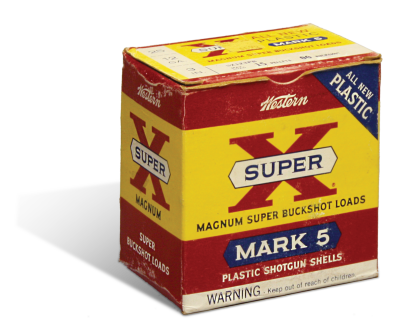
Simplified Shell Length
Sportsmen perceived a need for speed. Chamber lengths varied, with 2, 2½, 2-5/8, and 2- 9/16 inch lengths being common, and starting in the 1920s companies started shifting to a standardized 2¾ inch chambers and shells. Winchester launched the Super-X 12 gauge heavy duck in a 3-inch shell in 1935 while Mossberg introduced the 3½ inch 12 gauge in 1988. Federal Ammunition created the ammo to suit.
Non-toxics to the rescue.
While lead was the dominant material used for shot, Remington began experimenting with non-toxic shot in the 1930s. During the Great Depression, hunters looked for an affordable, performance shell, and that drove Big Green to focus on steel. The company’s focus increased when lead poisoning was discovered in Chesapeake Bay in the 1960s, and when lead was ultimately banned in 1991 Remington was ready with Nitro Steel.
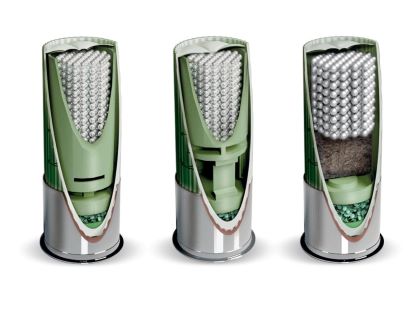
Original steel didn’t perform as well as lead. Pellets of comparative sizes weighed one-third less than lead and the shot wasn’t as lethal. Remember the Bismuth Cartridge Company that was funded by the late publishing magnate Robert Peterson? Though expensive, his shells offered the first commercially available alternative to steel. And now, a suite of boutique shotshell companies have arrived on the scene and are making shot from a wide range of materials like bismuth and tungsten that are coated with copper, nickel, zinc and fluoropolymers. These shells are faster, they hit harder, and smaller shot can be mixed with larger shot for excellent patterning. Speeds now range between 1100 and 1450 feet per second.
Powder Keg
Fun fact about why smokeless powders are called nitro powders; they use a variation of nitroglycerin. In the 1880s, Alfred Nobel, the inventor of both dynamite and the Nobel Peace Prize was an early pioneer. Black powder exploded when lit, but smokeless powder burned rapidly. The expanding gas is what created the pressure to successfully launch shot at higher velocities. Double base powders are now blended to control burn rates and achieve desired velocities.
Mass Production Begins
Frank Chamberlin of the Chamberlin Cartridge Company in Cleveland, Ohio is credited with mass production of shells. His iron, brass and wood loading machine clamped to a table, and he initially loaded and crimped 400 shells an hour. Improvements increased that speed to between 1200 and 1500 shells an hour. Production times decreased as efficiencies increased, and by the turn of the 20th century recreational sport shooting was sweeping the country. Shell uniformity was another benefit, and smokeless nitro powders excelled in fluid steel barrels. Chamberlin is also credited with the introduction of the 25-shell box, which was easy for retailer and shooter alike. Remington purchased Chamberlin’s business in 1933, the year before they purchased Parker Bros.
Fiocchi’s Golden Waterfowl Bismuth comes in a 28 gauge, and it’s a shell many small gauge waterfowlers are using (photo: Fiocchi).
Biodegradable Shells?
A glimpse into the future. Hunters have already been contributing to a healthier environment by shooting nontoxic shells, but even that is about to change. An estimated 10-15 billion shotshell wads are produced each year, and have been for the past 50 years. One wad is the plastic equivalent of two grocery bags, and their introduction into fields and waters is a problem. The race is on to create a totally environmentally friendly shell, with Fiocchi leading the charge to develop shells that have a minimal to zero environmental impact. Their EnviroShield initiative is designed to build on primers that already are lead and zinc free and non-toxic shot by creating a 100-percent biodegradable wad. The wads sink in water which immediately begins the breakdown process. Ranchers won’t have plastic wads clogging their bailers and grazing animals like cattle and sheep won’t ingest the plastic. The final step, which is in the test phase, is the use of biodegradable polymers in extruded hulls. That way if a hunter drops a shell in a field it won’t have an impact on the environment.
Boutique companies like Kent, HEVI-Shot, APEX and BOSS join legacy companies like Winchester, Federal and Remington in a spirited race towards improved performance. Small bores pack as much a punch as large bores, and think about this; in 50 years, will the 28 gauge replace the 12 gauge as a first shotgun? Since they offer light recoil with lethal properties they very well make the 12 gauge obsolete. Stranger things have been known to happen, that’s for sure.
Tom Keer is an award-winning writer and regular contributor to over a dozen magazines and blogs. His favorite time of year is in October and November where you can find him in woodcock and grouse coverts or quail fields with his wife, two kids, and three English setters. Visit him at www.tomkeer.com or at www.thekeergroup.com.

Tom Keer is an award-winning writer and regular contributor to over a dozen magazines and blogs. His favorite time of year is in October and November where you can find him in woodcock and grouse coverts or quail fields with his wife, two kids, and three English setters. Visit him at www.tomkeer.com or at www.thekeergroup.com.


Comments